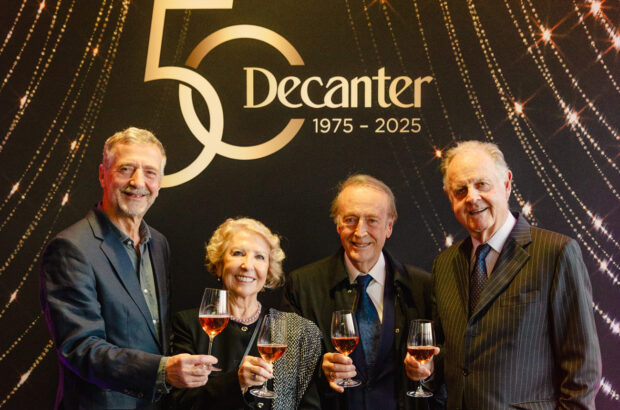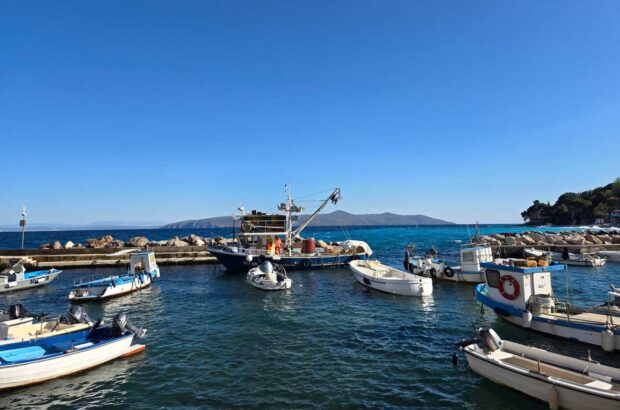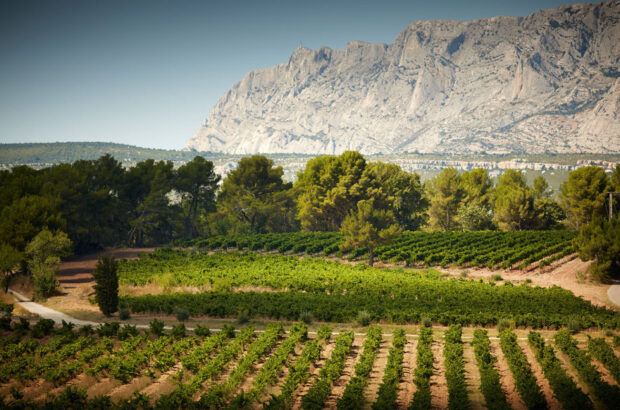Japanese Koshu hit the London wine scene as a curiosity in 2011, becoming unmissable from the wine lists of progressive fine-dining Asian restaurants.
Two years later, the potential of Indian wine was such that international wine judges were starting to take note, and Chinese wines had made a breakthrough in new markets – I recall the intrigue of a Chinese dessert wine being poured in my glass at a Livery Company dinner in the City of London.
Most recently, in the early autumn of 2023, I travelled to Changsha, China to celebrate 20 years of Decanter World Wine Awards (DWWA) with nearly all the leading Chinese winemakers in attendance.
Arguably, the rise of Asian wines has been nothing but spectacular, which I have witnessed across annual evaluations with Poh Tiong Ch’ng, Regional Chair of Asia, at DWWA. Serving as Acting Regional Chair at the competition three of the last four years, there’s much to take away.
Fast growth despite tough competition
Analysing the countries of origin for wines entered into DWWA reveals a story of notable growth for Asian wines.
China and Japan account for the overwhelming majority of Asian wines entered in DWWA. Then comes India with a significantly lower share, whilst countries and regions such as Indonesia, South Korea, Taiwan and Thailand regularly send wines to the global competition, but they remain very small in numbers for now.
When the base is small to start, it could be argued that growth is easily achievable. Moreover, only two countries – China and Japan – have been the engines of growth.
That said, a look at the overall percentage of wines awarded a medal, compared to the percentage of Asian wines awarded, reveals disparity: fewer wines from Asia pass the bar of quality set by DWWA judges; yet producers enter an increasing number of wines.
Driven by recognition and improvement, feedback from the world’s most reputed wine competition seems a plausible basis for this, but for us judges, it’s about the wines in the glass. Below is what we’re seeing.
Scroll down to see Csizmadia-Honigh’s recommended Asian wines to seek out
The power of the dragon: Chinese wines
The vast geographic expanse of China, gifted with an incredible diversity of soils, landscapes and climates, is a talking point when it comes to Chinese wines. Samples judged at DWWA illustrate it amply.
The north-easterly provinces of Liaoning and Jilin, closer to the Russian and North Korean borders than to the capital city of Beijing, have supplied the competition with a steady stream of high-quality ice wines, typically made from Vidal grapes and frequently harvested at temperatures as low as -10 or even -25 degrees centigrade.
Xinjiang, a westerly province closer to Kazakhstan and Mongolia, has impressed judges with its range of grape varieties and styles. It’s the elegance of full-bodied Syrahs, Cabernets and Marselans which are often awarded – the freshness of Chardonnays and exquisite balance of lesser-known Saperavi or Rkatsiteli, too. Xinjiang is the province to look out for!

Chinese Gold medal-winning wines from DWWA.
Speaking of Marselan and Cabernet, masses have been rated at DWWA from the inland province of Ningxia, where the two varieties prevail supremely. Quite often judges are faced with the extreme generosity of extraction, alcohol levels and oak ageing when tasting Ningxia reds, but winemakers have started to take note of the judges’ remarks, and a gradual shift to freshness is observable – even if very slow.
Huailai sub-region in the province of Hebei, a two-and-a-half-hour scenic drive from Beijing which passes by the Great Wall, is another inland source of good quality Marselan, Cabernet and Syrah.
Coastal Yantai in Shandong Province provides a final example for geographic diversity, where the close proximity of the sea lends freshness and elegance to its red wines.
Invariably, red wines continue to dominate domestic wine production in China, and within this, it’s satisfying to note that the quality and consistency of untainted samples has gradually been improving at the competition. We continue to track the nation’s growing successes, as well as the aging potential of its best wines.
As Chinese winemakers travel more widely and foreign investors and consultants impart more of their expertise, the evolution of Chinese wine is bound to persevere on a unique course.
Grapes of the rising sun: Japanese wines
Roughly twice as many whites are entered in the competition as reds and two-thirds of them are made from Koshu. What is fascinating about the indigenous grape of Japan is its ability to express the subtleties of terroir and thrive despite a relatively wet climate.
Judging Koshu often requires at least as much stamina as full-bodied Chinese reds, simply because the taster has to remain alert to the delicate and fine characters of the wine. Especially because there is a true stylistic diversity judges see at DWWA: light and mineral, delicate and floral, restrained but textured due to skin contact or sur lie ageing and richer due to fermentation or ageing in oak.
The number of Chardonnays entered in the competition from Japan is small, but many have been successful enough to be awarded a Silver (90-94 points). Notably, there has not been a Gold yet, an indicator that most of the excitement in this category is truly about Koshu, as far as whites are concerned.
Looking at Japanese reds the picture changes considerably. The combination of a cooler and wetter climate makes the ripening of black grapes more difficult – especially when the quest is to achieve a high-quality Bordeaux blend or Pinot Noir.
It was, therefore, to the surprise of many when a Zweigelt bagged a Gold in 2020 and then a Blaufrankisch in 2022. It seems that the Austro-Hungarian varieties with the versatility of wine styles are finding a new home for themselves in the Far East.
The quiet roar of the tiger: Indian wines
Indian wines represent the third largest group of Asian wines entered in DWWA, but producers yet have to make a decision to showcase more of their wines at the competition.
The majority of wines come from Nashik, the Indian wine country some 180 kilometres north-east of Mumbai. Other samples are sent by producers located in the Hampi Hills and Nandi Hills, both in the southern state of Karnataka.
It is disappointing that no Gold has been awarded to an Indian wine yet, despite improvements of quality observed over the years. From visits to producers in India, I know there is a real race in the cellars to achieve the breakthrough moment. Us judges are just as keen to witness this.
Pan-Asian mix: Indonesian, Thai & Taiwanese wines
The rest of the wines in the Asia panel tend to come mostly from Thailand and Indonesia with the odd sample arriving from Taiwan and Korea, too.
There are moments when not even the experienced taster of Asian wines would know the grape variety, as it is so obscure. A great example is Alphonse Lavallee from Bali, a dark-skinned black grape which is a crossing between Muscat Hamburg and Kharistvala Kolkhuri, a Georgian rarity.
Thai wines have impressed judges with a varying level of success and whilst French varieties, such as Viognier, Chenin Blanc or Petite Syrah, tend to dominate the squad, it is the normally unassuming Colombard that is noteworthy for achieving medals over the years.
To Taiwan’s wine production, it would be unfair to jump to conclusions due to the low number of entries in DWWA, but it certainly can be credited with introducing judges to its native breeding of Musann Blanc and showcasing Black Queen, a peculiar crossing bred in Japan in the 1920s.
Csizmadia-Honigh’s picks: DWWA-awarded Asian wines to try
China (Mainland)
Chateau Changyu Castel, Reserva Cabernet Gernischt, Yantai, Shandong 2019

DWWA 2023 | Gold, 96 points
The nose shows aromas of minty cassis, blackberries, Christmas spices and hints of tomato leaf and leather. Silky mouthfeel, very elegant expression on the palate. Alcohol 13.5%
Hanxiang Liquor, Nabaifu Classic Icewine Vidal, Huanren, Liaoning 2017

DWWA 2022 | Gold, 96 points
Lifted aromas of roses, dried apricot, mango, cloves, pear and honey. Elegant and rich, very well defined on the palate. Bright, with a playful acidity. Alc 11%
Lansai Winery, Yu Moli Cabernet Sauvignon, Helan Mountain East, Ningxia 2020

DWWA 2023 | Gold, 96 points
Classic nose displaying elegant aromas of roasted coffee, forest floor, cedar, dried leaves, leather and generous red fruit. Assertive and polished tannins, lovely long finish. Alc 15.5%
Puchang Vineyard, Viaseres Reserve Saperavi, Turpan, Xinjiang 2017

DWWA 2023 | Gold, 96 points
Powerful and spicy, displaying jammy aromas of red and black fruits, with interesting meaty nuances. Firm and well-integrated, rich, with a great concentration of flavour. Alc 14%
Redelion, Marselan1961, Helan Mountain East, Ningxia 2019

DWWA 2021 | Gold, 95 points
This hits the spot well starting with a delightful red fruit, coffee, spice and earthy bouquet. The palate ushers in juicy red fruits, cedar and clove. An elegant and remarkable wine. Alc 14.5%
Rui Tai Qing Lin, Guofei Guose Cabernet Sauvignon, Heshuo/Hoxud, Xinjiang 2019

DWWA 2022 | Gold, 95 points
The nose shows varietal typicity with ripe cassis, blueberry, dark cherry and raspberry aromas, framed by sweet vanilla and coconut. Bold and dense, refreshing finish. Alc 14%
Sanhe, Cailonglin Jinding Icewine Vidal, Huanren, Liaoning 2017

DWWA 2023 | Gold, 95 points
Complex and elegant aromas of lowers, ripe apricots and tropical notes of pineapple. Pure and energetic on the palate, lovely and expressive. Very long finish. Alc 12%
Tiansai Vineyards, Skyline of Gobi Grand Reserve Marselan, Yanqi, Xinjiang 2017

DWWA 2023 | Gold, 95 points
Mature, pruney nose with complex aromas of creamy oak, dark chocolate, barley sugar and leathery undertones. Polished and elegant on the palate. Refined tannins. Alc 14.4%
Yajianggu Winery, Icewine Vidal, Tonghua, Jilin 2017

DWWA 2023 | Gold, 95 points
The nose displays lovely scents of flowers with notes of tropical mango and pineapple, caramel and fresh honey. Crisp and lemony on the palate. Alc 10.6%
Zhongfei Winery, Zunxiang Syrah, Yanqi, Xinjiang 2019

DWWA 2022 | Gold, 95 points
Aromatic and complex nose, showing savoury meaty and bloody nuances under red and blue fruit overtones, framed by peppery notes. Harmonious and poised, easy tannins. Alc 15%
Chateau Changyu Golden Valley, Black Diamond Icewine Vidal, Huanren, Liaoning 2019

DWWA 2023 | Silver, 94 points
Aromas of dried apricots, orange zest, honey, flowers and hints of vanilla. Vibrant and attractive, with a long delicate finish. Alc 11.5%
Shacheng Winery, Shacheng Yima Marselan, Huailai, Hebei 2020

DWWA 2023 | Silver, 94 points
Meaty nose with violets and cocoa nuances framing opulent aromas of figs and dates. Rich and intense on the palate. Alc 15%
Canaan Winery, Chapter and Verse Mastery Chardonnay, Huailai, Hebei 2019

DWWA 2023 | Silver, 90 points
Rich aromas of yellow apricots with notes of tropical fruit salad and vanilla nuances. Savoury palate, harmonious, with a nutty finish. Alc 14.5%
Japan
Lumière, Hikari Barrel Fermented Koshu, Yamanashi, Chubu 2018

DWWA 2021 | Platinum, 97 points
Buttercup, orange peel, honey and almond aromas. Lovely texture on the palate, clove, butter and melon and white peach. There’s a strong hint of vanilla, as well as a broad and ripe yellow pear and peach pit character. Very special. Alc 12%
Suntory From Farm Tomi No Oka Koshu, Yamanashi, Chubu 2021

DWWA 2023 | Platinum, 97 points
Tempting green apple, pear, peach and lime with a vibrant lift of zingy mint and white pepper and a mesmerising burst of lemon acidity. Harmonious and complex with a playful saline cheekiness to finish it off. Alc 12%
Camel Farm Winery, Blaufrankisch Private Reserve, Yoichi, Hokkaido 2020

DWWA 2022 | Gold, 96 points
Elegant nose with moderate intensity aromas of blueberry, ripe red cherry, cocoa, fine herbs, mint and some mineral character. Firm texture, fresh and fragrant. Alc 13%
India
Moet Hennessy, Chandon Brut, Nashik, Maharashtra NV

DWWA 2023 | Silver, 91 points
Lovely aromas of potpourri, orchard fruits, honey, biscuit and nuances of savoury notes. Spicy palate, crisp and fresh, very elegant. Alc 12.5%
Sula Vineyards, Dindori Reserve Viognier, Nashik, Maharashtra 2021

DWWA 2022 | Silver, 90 points
Lovely bouquet of small white flowers, a pinch of spice and honeyed tropical fruit. Vibrant refreshing acidity on the finish. Alc 13%







